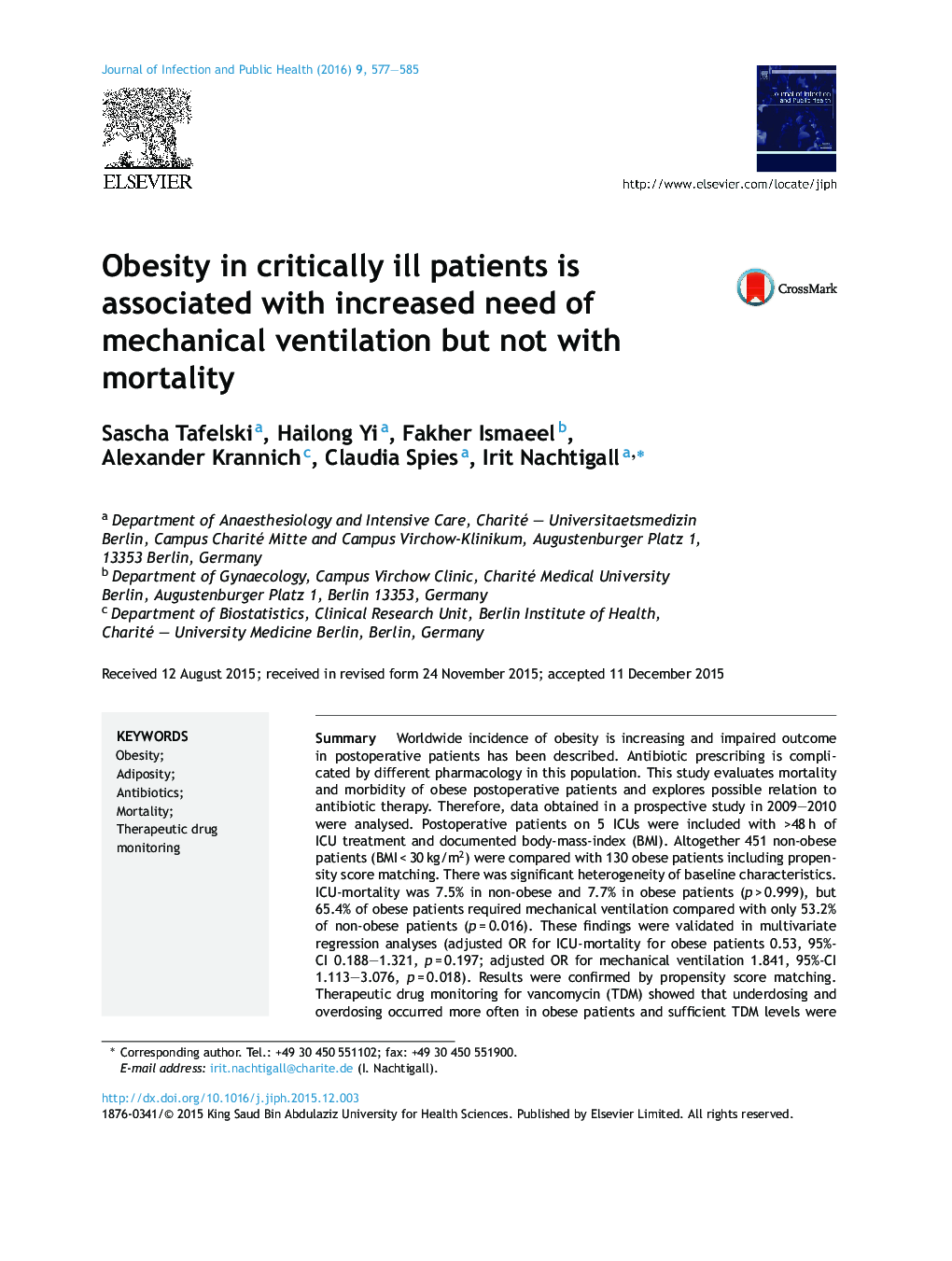| Article ID | Journal | Published Year | Pages | File Type |
|---|---|---|---|---|
| 3405799 | Journal of Infection and Public Health | 2016 | 9 Pages |
SummaryWorldwide incidence of obesity is increasing and impaired outcome in postoperative patients has been described. Antibiotic prescribing is complicated by different pharmacology in this population. This study evaluates mortality and morbidity of obese postoperative patients and explores possible relation to antibiotic therapy. Therefore, data obtained in a prospective study in 2009–2010 were analysed. Postoperative patients on 5 ICUs were included with >48 h of ICU treatment and documented body-mass-index (BMI). Altogether 451 non-obese patients (BMI < 30 kg/m2) were compared with 130 obese patients including propensity score matching. There was significant heterogeneity of baseline characteristics. ICU-mortality was 7.5% in non-obese and 7.7% in obese patients (p > 0.999), but 65.4% of obese patients required mechanical ventilation compared with only 53.2% of non-obese patients (p = 0.016). These findings were validated in multivariate regression analyses (adjusted OR for ICU-mortality for obese patients 0.53, 95%-CI 0.188–1.321, p = 0.197; adjusted OR for mechanical ventilation 1.841, 95%-CI 1.113–3.076, p = 0.018). Results were confirmed by propensity score matching. Therapeutic drug monitoring for vancomycin (TDM) showed that underdosing and overdosing occurred more often in obese patients and sufficient TDM levels were less often achieved. In conclusion, obesity is associated with increased morbidity but ICU mortality is equal compared with a non-obese population. Pharmacological differences might explain observed differences in antibiotic therapy and in obese patients TDM might be especially of importance.
